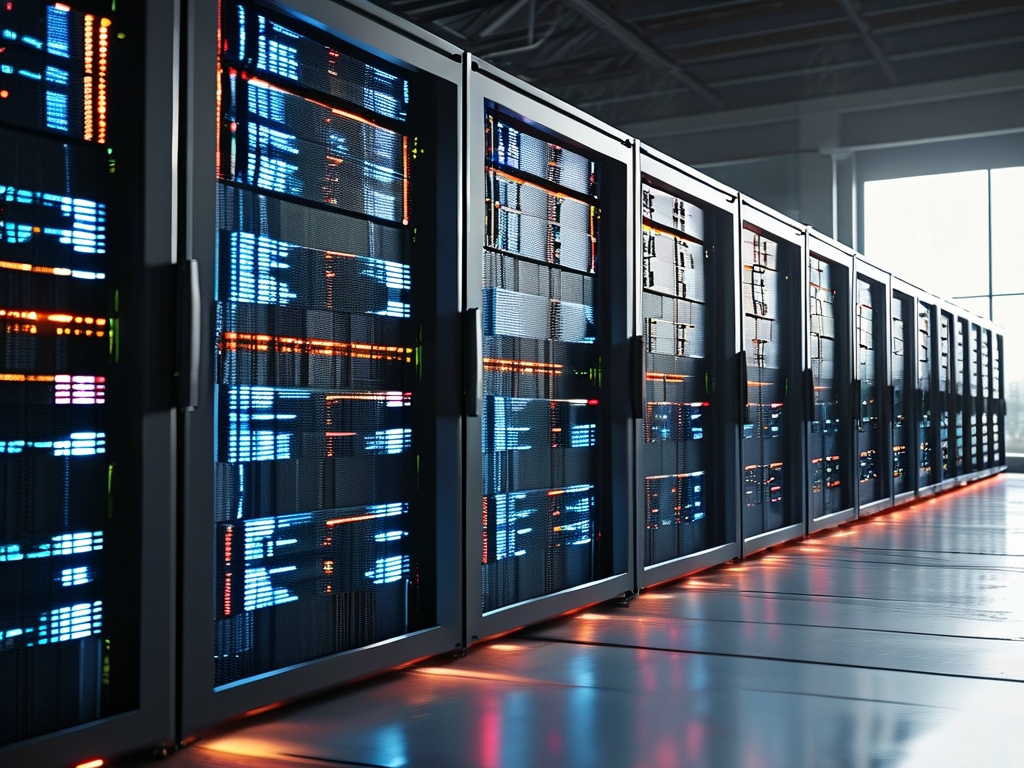The exponential growth of artificial intelligence has pushed computational infrastructure to its limits, with server memory capacity becoming a critical bottleneck for training and deploying large language models (LLMs) like GPT-4, PaLM, and LLaMA. This article explores the memory requirements of modern AI servers, analyzes industry trends, and addresses the question: How much memory is truly necessary for large model computing servers?

1. The Memory Hunger of Large Models
Modern LLMs contain hundreds of billions of parameters, with GPT-4 reportedly exceeding 1.7 trillion parameters. Storing these parameters alone demands massive memory:
- Float32 Precision: 1 billion parameters ≈ 4 GB
- Mixed Precision (FP16/FP8): 1 billion parameters ≈ 2 GB (with quantization trade-offs)
For a 1.7-trillion-parameter model, this translates to:
- 6.8 TB in FP32 (theoretically)
- 3.4 TB in FP16 (common practice)
However, practical memory requirements go beyond parameter storage:
- Intermediate Activations: Up to 20x parameter memory during training
- Optimizer States: Adam optimizer requires 2x parameter memory
- Batch Processing: Larger batches improve throughput but increase memory usage
2. Current Industry Standards
Leading AI hardware solutions reveal evolving memory configurations:
- NVIDIA DGX H100: 640 GB HBM3 per GPU (8 GPUs = 5.12 TB)
- Google TPU v5: 128 GB HBM per core (4,096-core pods = 524 TB)
- Cerebras CS-3: 44 GB on-chip memory per wafer-scale processor
Real-world deployments use hybrid strategies:
- Model Parallelism: Splitting models across GPUs/TPUs
- Offloading: Storing less-used data in CPU/NVMe (e.g., DeepSpeed Zero-Infinity)
- Compression: 8-bit quantization reducing memory by 75%
3. Memory vs. Performance Trade-offs
While more memory enables larger batch sizes and complex models, practical limitations exist:
- Cost: HBM3 memory costs ~$20/GB vs. DDR5 at ~$3/GB
- Power Consumption: 1 TB HBM3 consumes ~500W vs. 50W for DDR5
- Latency: Larger memory pools increase data retrieval times
Case Study: Training a 175B-parameter model
- Minimum Requirement: 320 GB/GPU (using ZeRO-3 optimization)
- Optimal Configuration: 640 GB/GPU (no offloading)
- Cost Difference: $1.2M vs. $2.4M per server
4. Future Projections and Innovations
With models predicted to reach 100 trillion parameters by 2030, memory solutions are evolving:
- 3D Stacked Memory: Samsung’s 1.2 TB HBM-PIM modules
- Compute-in-Memory Architectures: Analog AI chips from Mythic AI
- Optical Memory: Lightmatter’s photonic tensor cores
Industry experts predict:
- 2025: 2 TB/GPU becomes standard for LLM servers
- 2030: 10 TB/GPU using emerging non-volatile technologies
5. Practical Recommendations
For organizations building AI infrastructure:
- Model Size First: Allocate 4x parameter count in GB as baseline
- Precision Strategy: FP16/INT8 can halve memory needs
- Scalability: Use composable memory architectures (e.g., CXL 3.0)
: While current cutting-edge servers operate with 500 GB–1 TB per GPU, the “right” memory size depends on model complexity, optimization techniques, and budget. As AI continues its unprecedented growth, memory capacity will remain both a technical challenge and a strategic differentiator in the race for artificial general intelligence.

